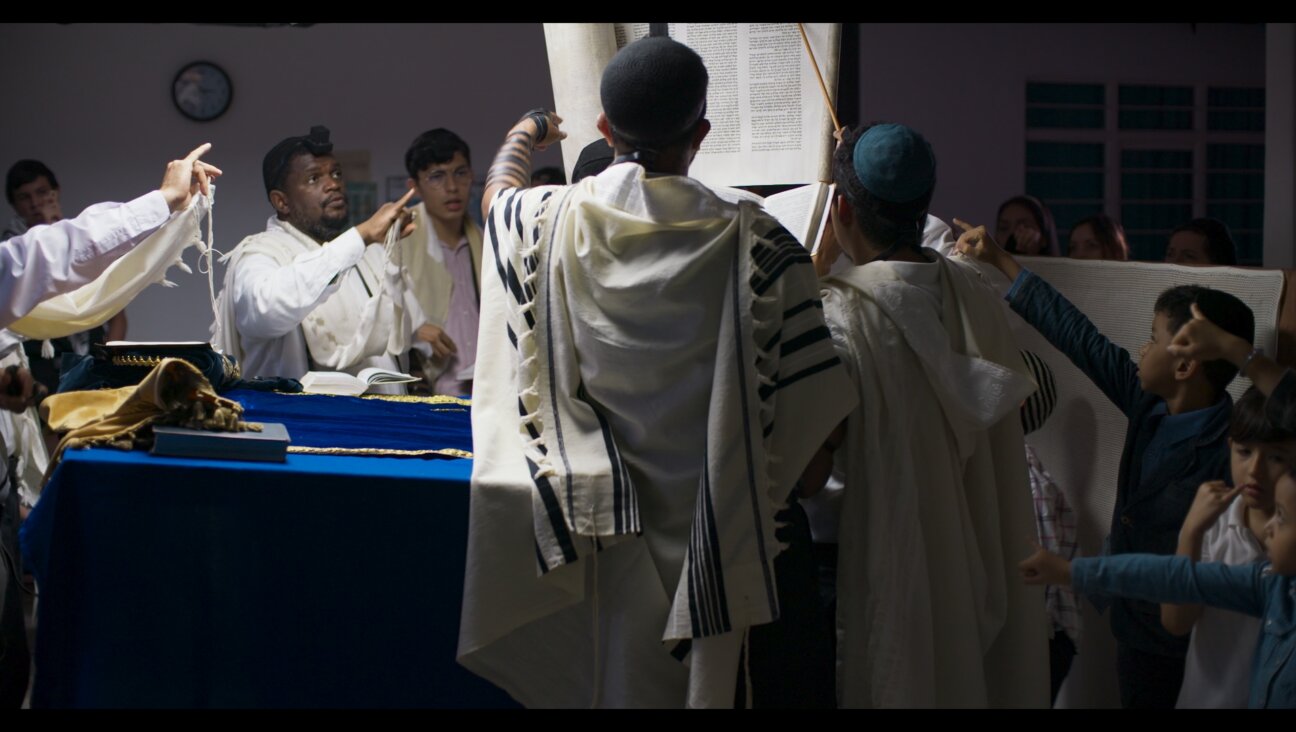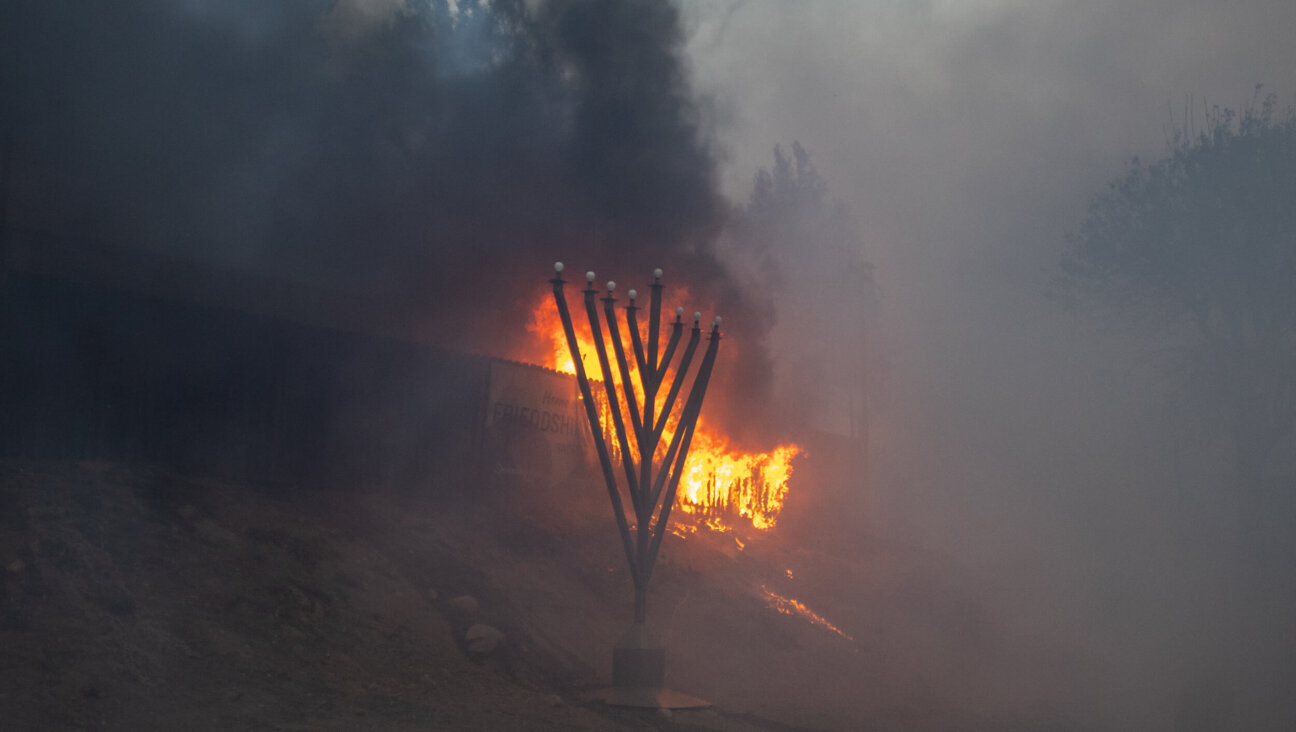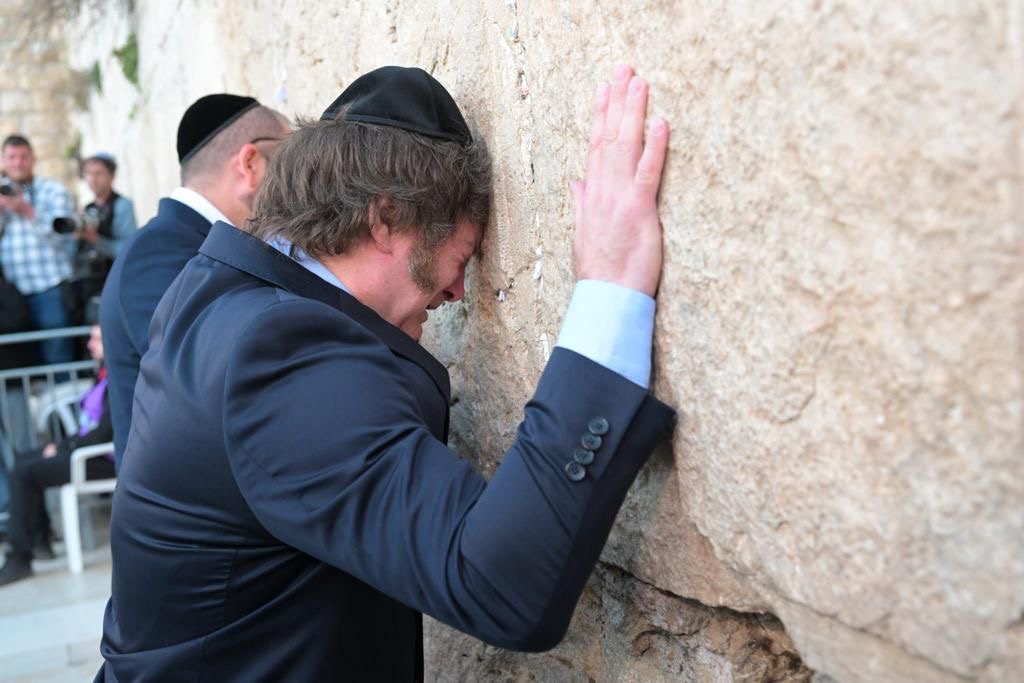Parts Creating a Whole
While some Jews whose ancestors lived in medieval Spain might refer to themselves as “Sephardi Tahor” (or “pure Sephardi”) — which implies that their brethren from the Middle East and Africa are not — the ninth annual International Sephardic Film Festival brings everyone together under one big tent. The series, opening next week at Manhattan’s Center for Jewish History, includes documentaries that search for the lost world of Spanish Jewry, as well as films that portray Jewish adolescence in Tunisia and Iran and the plight of Iraqi Jews under Saddam Hussein. As individual offerings, the films each present a rather narrow view of Sephardic history and culture, but taken together, they create a multifaceted tapestry.
“The Last Sephardic Jew” (2003) follows Eliezer Papo — a lawyer, novelist and itinerant rabbi — on a tour of post-Inquisition diaspora communities. Papo is called the last Sephardic Jew because he can trace his lineage back to Spain, and because he grew up speaking Ladino — which, according to the filmmakers, is the true definition of “Sephardic.” Furthermore, the documentary seems to equate language with destiny by suggesting with obvious despair that the world of Spanish Jewry finally will disappear when the last native speakers of Ladino pass away.
Some of the film’s subjects, however, seem less willing to romanticize their ancestors’ sojourn in Spain. When Papo visits compatriots in Istanbul, Turkey, a journalist quips that his blood has “red cells and white cells, Sephardic cells and Spanish cells,” while his dinner companion is quick to pledge allegiance to her actual homeland.
“I support the mothers who don’t speak Ladino to their children,” philologist Beky Bar David says. “We live in Turkey.”
In the end, though, Papo holds on to his Spanish heritage, but mostly as an idea. “Sepharad is not a geographical, physical place,” he says. “When a Sephardic Jew says ‘Sepharad,’ he has a mythological world in mind; a surreal, spiritual place only existing in our national mind.”
The documentary “Paths of Memory” (2002) reconnects with lost communities through the traces they left behind. Focusing on the Jews who poured into Portugal after the Spanish expulsion, the film finds subtle signs of Jewish existence throughout the country. In addition to cemeteries and street signs in former Jewish quarters, the camera settles on the slightest of indentations left on a stone doorway. Five hundred years after mezzuzot made way for crosses, their mark endures.
A more recent exodus is chronicled by “The Last Jews of Baghdad” (2004), which will make its world premiere at the festival. The film uses documentary footage and interviews with Jewish exiles to tell the story of the torture, escape and exodus of more than 160,000 Iraqi Jews between 1940 and 2003. While at one time 40% of Baghdad’s residents were Jews, fewer than fifty remain today. This Jewish tale, like so many others, ends with exodus — and survival in a new home.
Finally, the festival offers a sort of filmic sorbet (perhaps to cleanse the palette between Spain and the Middle East?). “Derrida” (2002) is a thoughtful and witty documentary about the famous French philosopher and Algerian Jew who died earlier this year. In the manner of reality television, Jacques Derrida allowed a camera crew to follow him everywhere — including around his kitchen and on a trip to Nelson Mandela’s former prison on Robbin Island — but not without providing commentary about the unreality of the film. It is a theme the thinker consistently emphasizes to viewers: No, he doesn’t always dress this nice; no, he isn’t always drinking fancy wine; no, he won’t recount meeting his wife because the story never would capture the reality anyway.
With deconstruction, Derrida attacked binary categories like good and evil, the self and other. For Diaspora Jews, with their split identities and fractured allegiances, it is a compelling way to look at the world.
Jennifer Siegel is a writer living in New York.
A message from our Publisher & CEO Rachel Fishman Feddersen

I hope you appreciated this article. Before you go, I’d like to ask you to please support the Forward’s award-winning, nonprofit journalism so that we can be prepared for whatever news 2025 brings.
At a time when other newsrooms are closing or cutting back, the Forward has removed its paywall and invested additional resources to report on the ground from Israel and around the U.S. on the impact of the war, rising antisemitism and polarized discourse.
Readers like you make it all possible. Support our work by becoming a Forward Member and connect with our journalism and your community.
— Rachel Fishman Feddersen, Publisher and CEO























